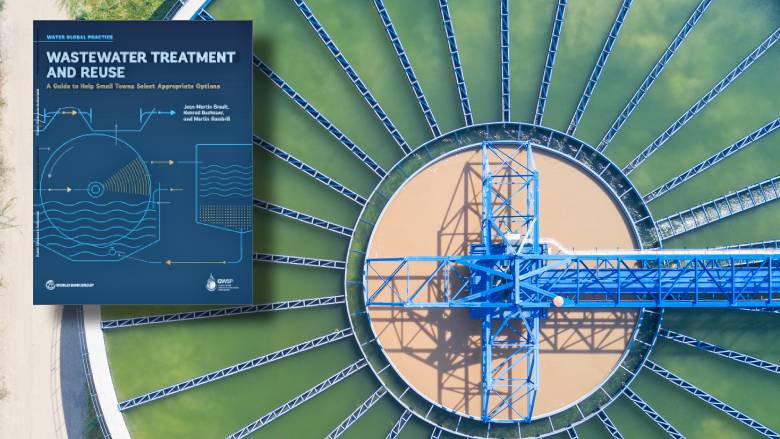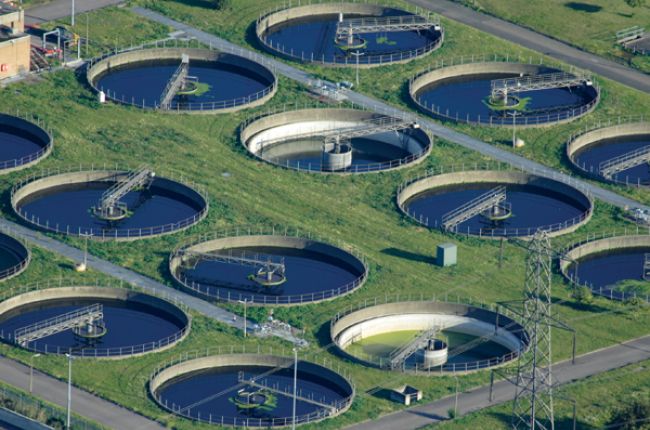Comprehensive Overview to Hazardous Waste Water Treatment Procedures
Comprehensive Overview to Hazardous Waste Water Treatment Procedures
Blog Article
Strategic Approaches to Boost Drainage Therapy Effectiveness and Minimize Ecological Impact
In the realm of waste water treatment, the quest for boosted effectiveness and reduced environmental impact is a continuous difficulty that requires calculated services. The combination of sophisticated treatment modern technologies, energy-efficient processes, source healing methods, enhanced nutrient removal techniques, and wise monitoring and control systems represents a multifaceted framework for attending to these pushing issues.
Advanced Therapy Technologies
Innovative membrane layer filtering systems have changed advanced wastewater treatment procedures, considerably improving the elimination of pollutants. This modern technology has actually proven to be very reliable in removing a broad range of impurities, including pharmaceuticals, hefty steels, and natural substances, which are usually testing to get rid of via traditional therapy approaches.
Furthermore, membrane filtration systems offer numerous advantages over traditional therapy strategies. Furthermore, these systems are highly functional and can be easily integrated into existing therapy plants or used as standalone systems for decentralized applications.
Energy-Efficient Processes
The combination of energy-efficient procedures in wastewater treatment systems is essential for maximizing resource application and lowering operational expenses. By implementing energy-efficient modern technologies, treatment plants can substantially decrease their carbon impact and overall environmental influence. One essential approach to improving power efficiency in wastewater therapy is the utilization of sophisticated oygenation systems, such as fine bubble diffusers or surface area aerators, which can boost oxygen transfer efficiency and minimize power consumption. Additionally, integrating power recovery systems, like anaerobic digestion for biogas manufacturing or making use of excess heat for thermal procedures, can aid balance out power requirements and promote sustainability.
Furthermore, optimizing process control and automation through making use of innovative sensing units and checking systems can enhance general power efficiency by adjusting procedures in real-time based on real need and problems. Applying power audits and regularly keeping an eye on energy performance indicators are essential techniques to identify locations for enhancement and track energy-saving initiatives effectively. Generally, the fostering of energy-efficient processes in wastewater treatment not just profits the setting but likewise contributes to long-term price savings and operational sustainability.
Source Healing Methods
With a concentrate on optimizing resource utilization and sustainability in wastewater treatment systems, the application of resource healing methods arises as a critical aspect in boosting functional effectiveness. Resource recuperation strategies in wastewater therapy entail the identification and removal of beneficial resources from the waste stream, consequently turning what was as soon as thought about waste right into a useful possession. By executing resource healing methods such as nutrient elimination and healing, energy generation from organic matter, and the production of recyclable water, wastewater therapy plants can lessen ecological effect while making best use of effectiveness.

Boosted Nutrient Elimination Techniques
Executing sophisticated nutrient removal strategies is crucial for maximizing the efficiency of wastewater therapy systems. Enhanced nutrient elimination plays a crucial role in decreasing the environmental influence of cured effluent released into water bodies. Among the key techniques utilized for improved nutrient elimination is the process of organic nutrient removal (BNR), which entails the elimination of nitrogen and phosphorus via biological procedures. This can be achieved via making use of specialized microorganisms that can transform nitrogen compounds into inert nitrogen gas through denitrification, and accumulate phosphorus within their cells through a procedure called enhanced organic phosphorus removal (EBPR)

In addition to BNR, progressed treatment techniques such as membrane layer bioreactors (MBRs) and constructed wetlands can likewise be utilized to improve nutrient removal effectiveness. By including these innovative nutrient removal strategies into wastewater therapy systems, municipalities and industries can successfully minimize nutrient contamination and protect the environment.
Smart Tracking and Control Systems
Utilizing cutting-edge dig this technology, the integration of clever surveillance and control systems transforms the functional effectiveness of wastewater therapy centers. These systems include advanced sensors and information analytics to continuously keep track of vital specifications such as pH levels, turbidity, dissolved oxygen, and circulation rates in real-time. By gathering and evaluating this information, drivers can obtain beneficial understandings into the efficiency of the treatment processes, making it possible for proactive adjustments to maximize therapy performance.
Smart monitoring and control have a peek at these guys systems additionally support remote monitoring capabilities, permitting operators to accessibility real-time information and control features from off-site areas. This remote availability improves functional flexibility and responsiveness, allowing speedy treatments in situation of system breakdowns or fluctuations in influent quality. Moreover, the anticipating maintenance capabilities of these systems aid prevent equipment failures and lessen downtime, inevitably improving the overall dependability of wastewater treatment procedures (Waste Water Treatment).
Verdict
In final thought, strategic strategies such as sophisticated treatment technologies, energy-efficient processes, resource recuperation methods, enhanced nutrient removal techniques, and smart tracking and control systems play a crucial duty in boosting wastewater treatment efficiency and reducing environmental effect. By implementing these techniques, wastewater therapy plants can enhance their overall efficiency, minimize energy consumption, recover beneficial resources, and make sure compliance with environmental policies. These approaches are crucial for reliable and lasting wastewater monitoring methods.

In verdict, critical techniques such as sophisticated therapy technologies, energy-efficient procedures, source recuperation techniques, enhanced nutrient elimination methods, and smart tracking and control systems play a critical duty in boosting wastewater treatment effectiveness and minimizing environmental influence.
Report this page